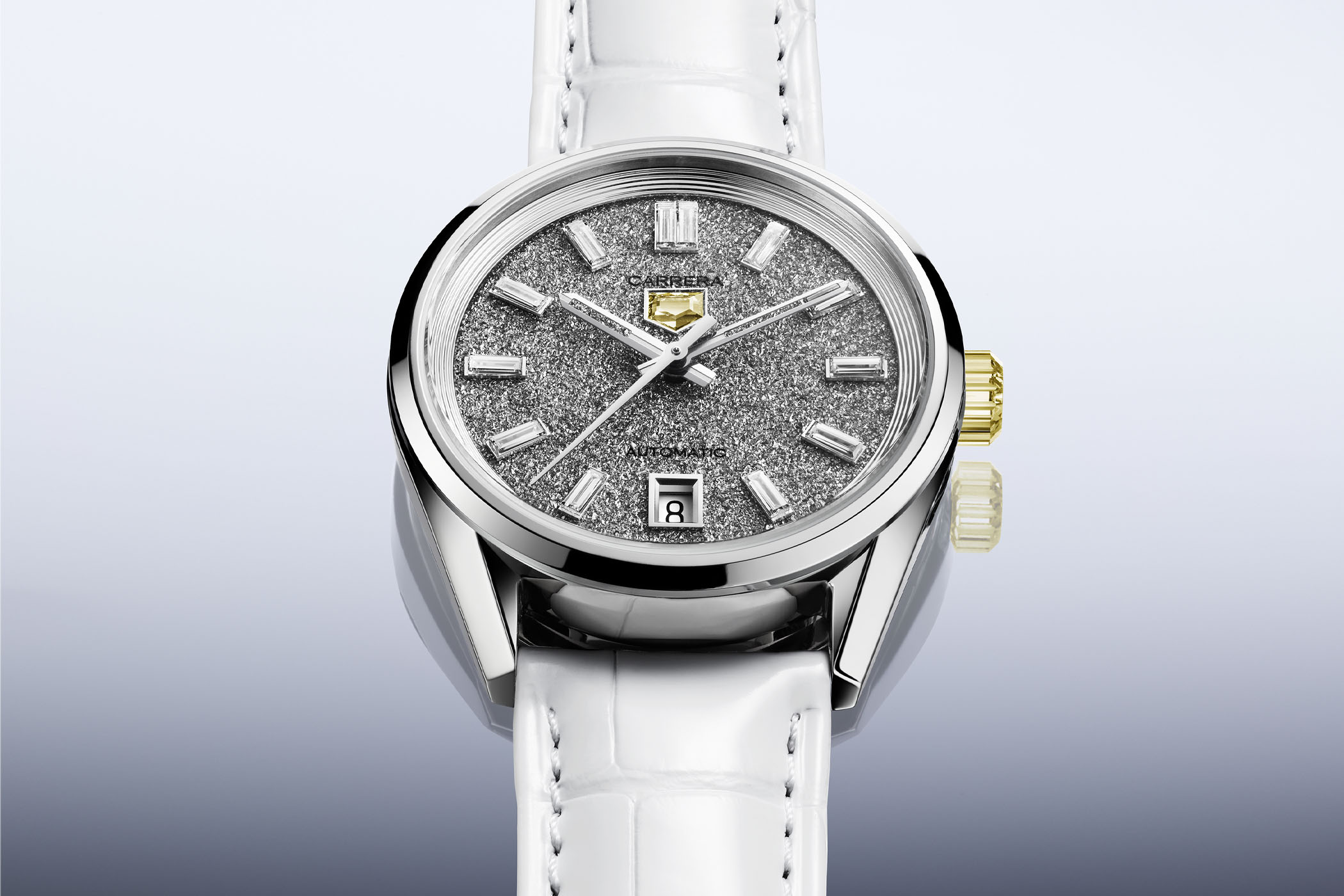The TAG Heuer Carrera Date Plasma d’Avant-Garde, In Yellow Lab-Grown Diamonds
A compact Carrera shining with white and yellow diamonds secures TAG Heuer's pole position on the lab-grown diamond scene.

Lab-grown diamonds are used extensively in jewellery but rarely in watchmaking. What takes nature billions of years to achieve and immense effort to mine can be pulled off in a laboratory in a matter of weeks. Embracing the technology and leading the pack, TAG Heuer is the first major Swiss brand to integrate lab-grown diamonds into its watches. With the launch of its third Plasma watch during LVMH Watch Week, TAG Heuer consolidates its pole position on the lab-grown diamond scene. Here’s a first peek at the new Carrera Date Plasma Diamant d’Avant Garde, flaunting a burst of golden sunshine in the form of a yellow diamond.
Although you can come across a sprinkling of diamonds on its women’s watches, diamonds are not the first thing that spring to mind when you think about TAG Heuer. As a brand that likes to experiment with avant-garde materials, lab-grown diamonds are an exciting proposal; not only are they infinitely cheaper to produce, but they are identical to natural diamonds in their structure, appearance and chemical composition. Replicating the enormous pressure and temperatures that create natural diamonds, lab-grown diamonds can be grown using CVD (chemical vapour deposition) in different colours, textures and sizes at a fraction of the cost.
Known as the Plasma Project, the first exponent of this exciting technology was the Carrera Plasma Tourbillon of 2022, with practically every surface scintillating with the light of lab-grown diamonds in different formats.
Exceptional in every way, the 36mm case of the Carrera Date is crafted in white gold and packed with 4.8 carats of lab-grown diamonds in different formats. The dial, for example, is a single plate made of special polycrystalline diamonds that glistens like the wet asphalt of a racetrack. To paraphrase Lusix, one of TAG Heuer’s lab-diamond suppliers, the dial and the individual diamonds are created using CVD technology, where a ‘seed’ of a diamond is placed inside a vacuum chamber with carbon and hydrogen gases. A plasma of the gases is ignited with microwave radiation. The plasma decomposes the gases into radicals with carbon atoms, and these atoms gradually bond to the seed and grow the crystal.
The highlight of this third Plasma model can be appreciated on the crown and inside the brand’s shield on the dial, basking in the sunshine sparkle of two spectacular lab-grown yellow diamonds. This is the brand’s second coloured diamond, following the pink diamond used on the 2023 Carrera Date model. Known as fancy coloured diamonds, these come in a rainbow of colours and are rarer and much more expensive than white diamonds: only one carat of every 10,000 carats mined is a natural fancy coloured diamond.
Unlike colourless diamonds that have an organized configuration of carbon atoms, coloured diamonds get their colour from trace elements, like nitrogen in the case of yellow diamonds. To recreate the conditions necessary to produce coloured diamonds, a deliberate introduction of disorder is necessary. Using Plasma technology – TAG’s name for CVD – the controlled disorder can be perfectly regulated to produce high-quality, colour-rich, uniformly saturated diamonds. Along with the bright yellow diamonds, the dial is set with twelve large white lab-grown baguette-cut diamond hour markers.
The sapphire caseback reveals TAG Heuer’s calibre 7 automatic movement – Sellita SW300 base – with a 56h power reserve. Unveiled during LVMH Watch Week, the Carrera Date Plasma Diamant d’Avant-Garde is presented on an elegant white alligator strap with a white gold pin buckle. For more information, please consult tagheuer.com.











1 response
Look Ma. It’s grand Seiko.